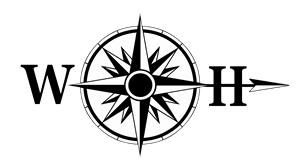An Introduction to Wreck Hunters
This site is dedicated to people who dream of becoming detectives of the world’s oceans.
If you aspire to be a diving archaeologist, wreckhunters.co.uk is here to enable your passion to become a reality.
Where better to learn the science of excavating historical wrecks than the warm tropical waters of Utila, a little known hidden Caribbean jewel just off the coast of Honduras.
Utila may be off the beaten track but the island of just 45 km² boasts more than 80 dive sites; beautiful wall dives and vibrant coral reef systems bursting with life.
A Little Bit of History
One of these sites was discovered in the early 1970s as part of a treasure hunting expedition known as Operation Fathom II. This was a well-funded, professional team which included a characterful Austrian diver, Gunter Kordovsky (photo opposite), who has become something of a local legend. He and the team discovered a late-18th Century wreck, in around 18m of constantly warm water, most likely called ‘The Oliver’. It was a voyage which was to change Gunter’s life.
He has remained on Utila to this day.
Those hoping to become rich were disappointed but the discovery of this sunken trading ship led to a veritable treasure trove of historical artefacts. Among the haul retrieved from the seabed was pottery, pewter, glass, ship fittings, two large anchors and cannon, the latter now being displayed on the island.
Gunter is totally enamoured by the location, ‘Utila is a volcanic island with drop-offs a stone’s throw from the beach, making for excellent wall diving and beach entrance. Its famous “Big Wall” at Turtle Harbour drops off into the abyss where the continental shelf comes in.
The same features that make Utila a diver’s paradise make the island hazardous for ships, especially in the old days when there was no electronic aids to navigation or reliable weather forecasts. It is a veritable maritime graveyard, and a playground for wreck-divers.’
A Starting Point
Now a new initiative founded by Mike Haigh, an archaeology graduate and experienced diving archaeologist, aims to turn the wreck site into an advanced underwater classroom.
‘At a time when maritime archaeology is helping to reveal the long-standing and profound links between different peoples, this project couldn’t come at a better time,’ says Mike.
According to Mike, the plan is to run annual projects from mid-June through to mid-September. Students will have the option to take part for anything from a few weeks to the whole season.
Students will be trained in the skills needed to study and excavate the site, a time-capsule representing a moment in history.
Among the skills taught will be site survey and mapping, the recording of artefacts for scientific investigation, excavation techniques, underwater comms, dive boat management, as well as photography and videography.
The ‘Oliver’, which covers an area of about 110-feet x 30-feet is visible in parts but largely buried in shallow sand. Thankfully, she’s in waters mostly protected against the weather and is only a short RIB ride from shore.
Guest lecturers will add to the expertise of the project.
Participants would be expected to have a reasonable diving skillset (to at least Advanced Open Water or equivalent with a minimum of 30 dives).
Accommodation on the island is excellent as are the support facilities, not to mention the scores of other attractions.
In order to support the project, we’ve put together a team of vastly experienced and knowledgeable individuals.
So, this new Wreckhunters.co.uk project, which aims to now start in 2022, offers nothing short of a unique opportunity for people who want to take their love of all things historical underwater to the next level.
Please feel free to get in touch via the contact page and we’ll be delighted to answer any questions you may have.
Happy diving
Mike Haigh (FRGS), Project Director
Full Introduction Videos
Mike Haigh
Toby Parker
Joanna Yellowlees-Bound

